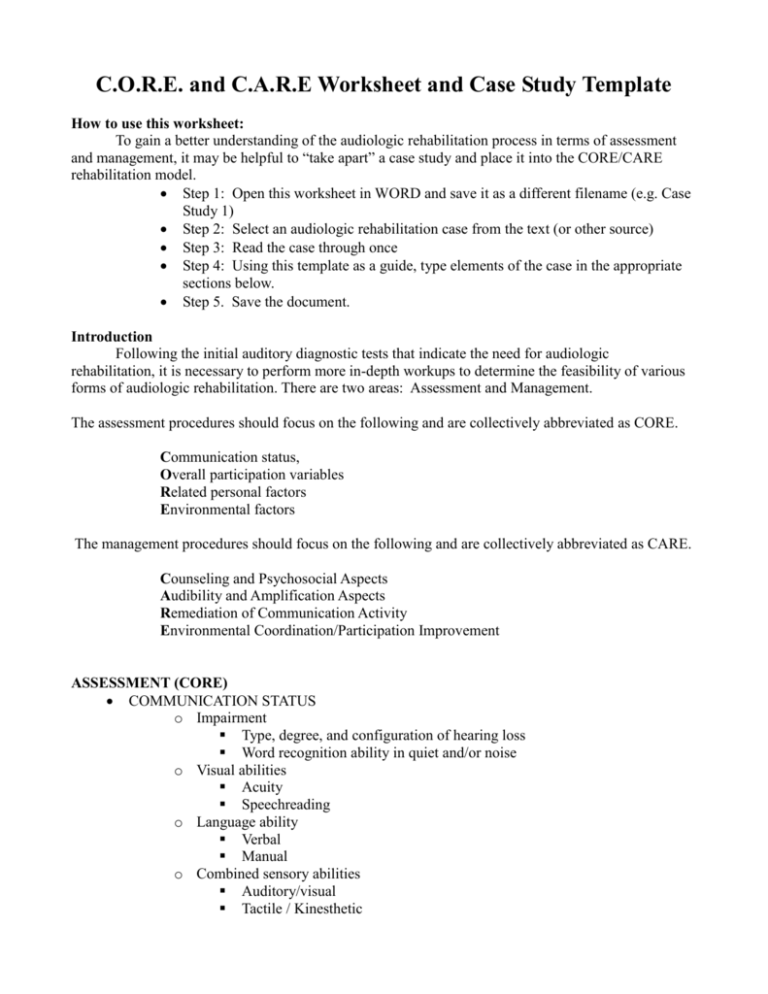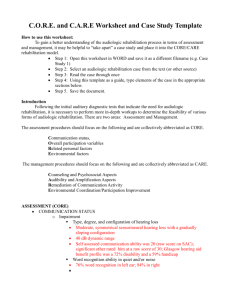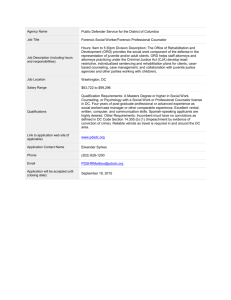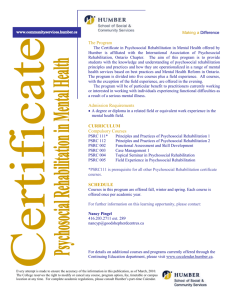Case Study Template
advertisement

C.O.R.E. and C.A.R.E Worksheet and Case Study Template How to use this worksheet: To gain a better understanding of the audiologic rehabilitation process in terms of assessment and management, it may be helpful to “take apart” a case study and place it into the CORE/CARE rehabilitation model. Step 1: Open this worksheet in WORD and save it as a different filename (e.g. Case Study 1) Step 2: Select an audiologic rehabilitation case from the text (or other source) Step 3: Read the case through once Step 4: Using this template as a guide, type elements of the case in the appropriate sections below. Step 5. Save the document. Introduction Following the initial auditory diagnostic tests that indicate the need for audiologic rehabilitation, it is necessary to perform more in-depth workups to determine the feasibility of various forms of audiologic rehabilitation. There are two areas: Assessment and Management. The assessment procedures should focus on the following and are collectively abbreviated as CORE. Communication status, Overall participation variables Related personal factors Environmental factors The management procedures should focus on the following and are collectively abbreviated as CARE. Counseling and Psychosocial Aspects Audibility and Amplification Aspects Remediation of Communication Activity Environmental Coordination/Participation Improvement ASSESSMENT (CORE) COMMUNICATION STATUS o Impairment Type, degree, and configuration of hearing loss Word recognition ability in quiet and/or noise o Visual abilities Acuity Speechreading o Language ability Verbal Manual o Combined sensory abilities Auditory/visual Tactile / Kinesthetic o Expressive / Receptive Communication Ability OVERALL PARTICIPATION VARIABLES o Psychological o Social Family Significant others Social class Lifestyle o Vocational o Educational RELATED PERSONAL FACTORS o Personal attitude o Age o Gender o Educational o Personality o Character Style o Aptitude o Health Considerations Fitness Lifestyle Habits o Upbringing o Coping Styles o Social background o Profession o Previous and current experiences ENVIRONMENTAL FACTORS o Individual’s environment Physical features of the person’s environment Personal contacts o Services environment Social Structure Services available in the work environment Social services Communication services Transportation services o Systems environment Laws, regulations, and rules (formal and informal) o Acoustic environment Quiet? Noisy? Difficult/Simple MANAGEMENT (CARE) COUNSELING/PSYCHOSOCIAL o Interpretation of audiologic findings to the client and other significant persons o Pertinent information o Counseling / guidance with regard to: Education Vocation Psychosocial Communication AUDIBILITY IMPROVEMENT USING AMPLIFICATION AND ASSISTIVE DEVICES o Amplification / assistive device fitting (hearing aids, cochlear implants, amplified phone, signal warning, etc.) Hearing Instrument Orientation (HIO BASICS) Function and maintenance REMEDIATE COMMUNICATION ACTIVITY o Communication activity Residual communication deficits after audibility management Speechreading training Assertiveness training Communication repair strategies Management of frustration ENVIRONMENTAL COORDINATION: PARTICIPATIONIMPROVEMENT o Setting goals for communication Self report o Coordination with other sources of help Physicians, health care professionals, etc. o






